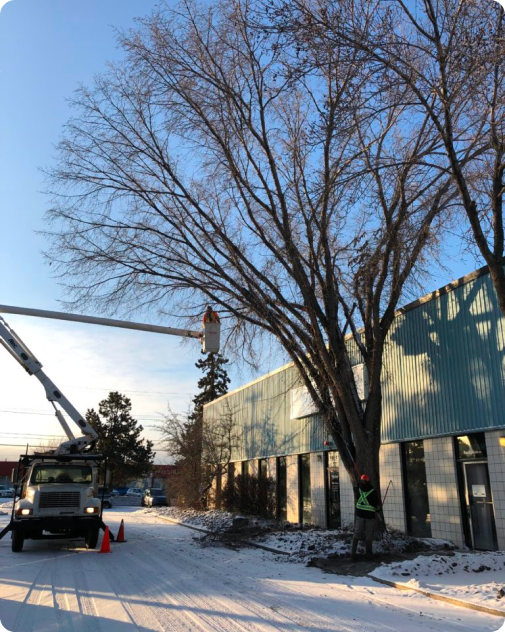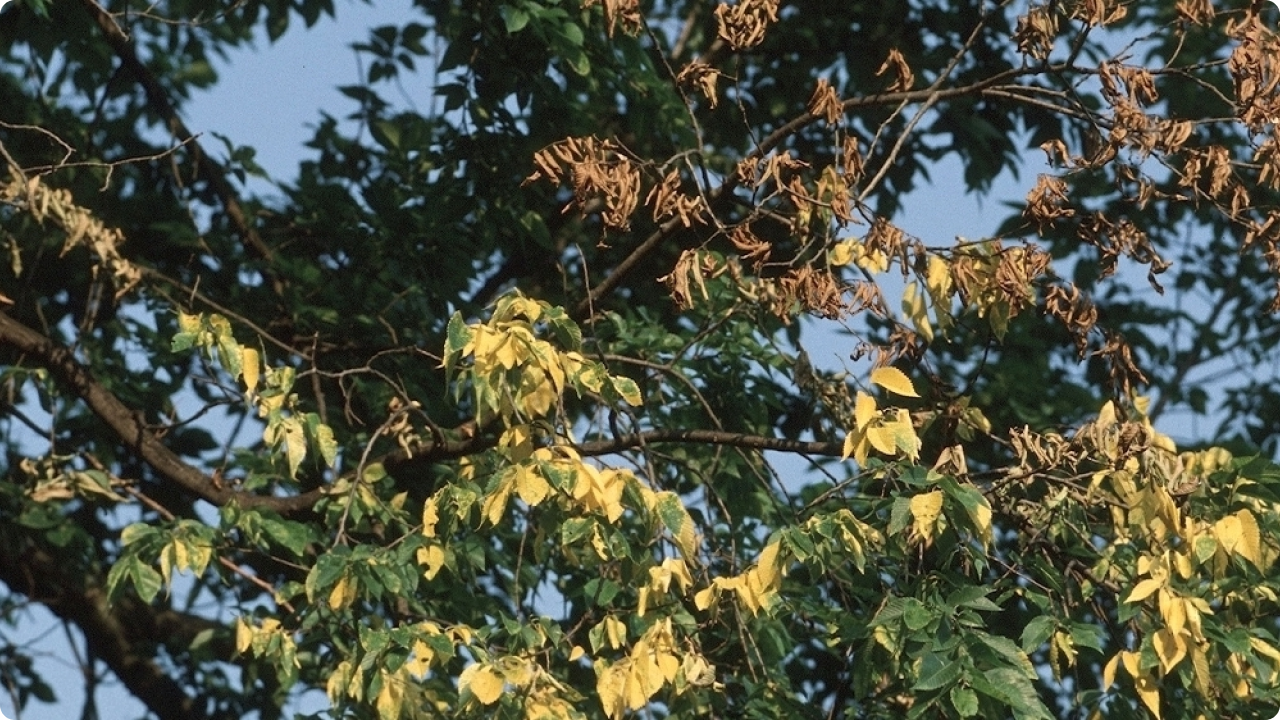Elm wilt symptoms look a lot like the same symptoms of Dutch elm disease. Leaves will wilt, yellow, curl, and die back branches at a time. The bark can develop a reddish hue and have small black cankers on the surface. Young branches may develop a noticeable bend as infected bark shrink. Eventually entire branches will die off. Young elm trees can be killed in a season while mature trees take 3-4 years to succumb to a severe infection. While the symptoms are the same as DED the fungus that causes them does not need an insect to spread. The Dothiorella fungus spores spread when they activate in the spring via wind, water transference, insects, and birds. The fungus will take hold in tree wounds and leaves then start to spread. Most elm trees can survive minor infections and will only decline if very young or if they are already weakened. In Edmonton we commonly see elm trees in poor growing conditions such as those planted in parking lot boulevards will struggle with elm wilt the most. The best control for Elm wilt as with all other tree ailments is to maintain healthy trees. Trees with proper amounts of water, nutrients, and sunlight will have the vigor to outgrow and resist most ailments. Following Edmonton elm pruning bylaw will also help keep Elm wilt under control. The fungus is dormant during elm pruning season October 1st to March 31st, so this when elm pruning should occur. Infected wood and dead/damaged wood should be removed with proper pruning technique to encourage healing and reduce wounds to be infected. Elm debris must be properly disposed of as per bylaw. If a tree is severely infected and recovery is improbable, then removal is the best option to reduce other trees being infected. Elm stumps must be debarked 10cm below the surface or grinded.

In Edmonton we find that Dothiorella Elm Wilt infection and Elm Scale infestation are often both present. Elm scale can weaken a younger tree easily and will be less able to handle the elm wilt infection. Elm scale is treatable so monitoring and maintenance is key to all elm tree owners.
Web
https://www.edmonton.ca/programs_services/pests/dothiorella-elm-wilt
Professional Reference
Denise Allen, ISA Certified Master Arborist, Jan 12, 2023
References
Wayne A. Sinclair & Howard H. Lyon “Diseases of Trees and Shrubs 2nd Edition”


